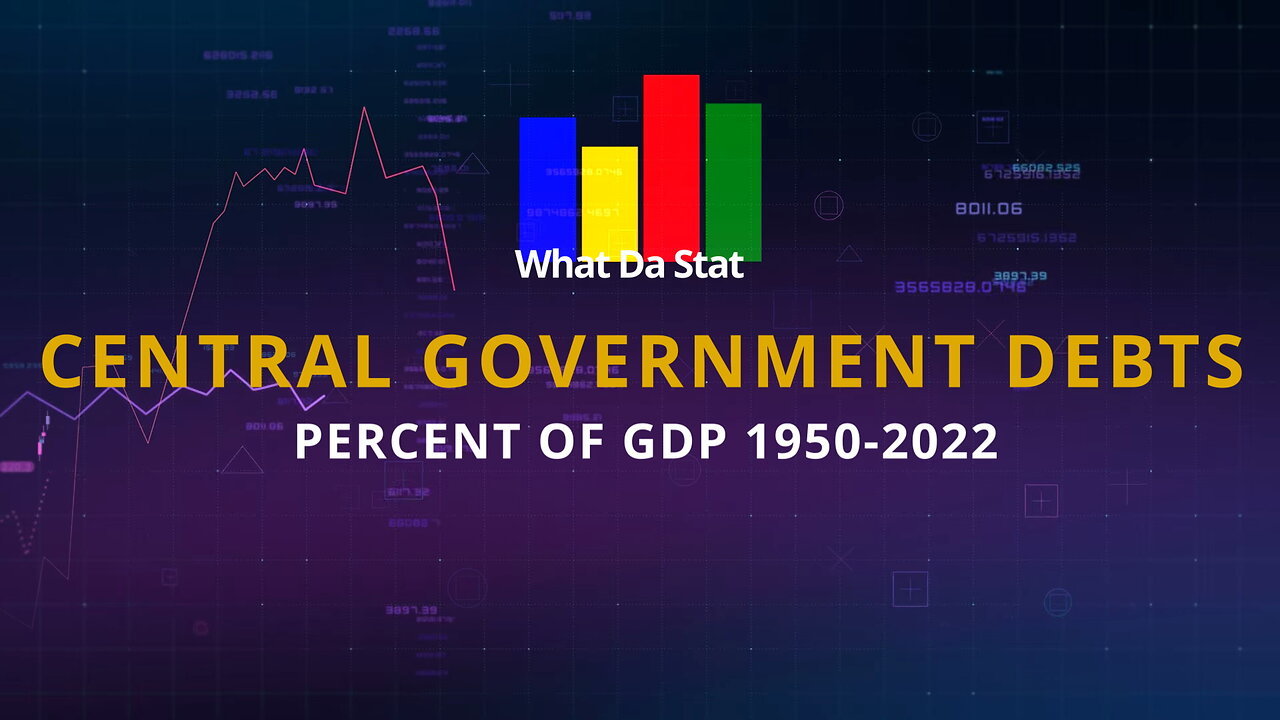Premium Only Content

Central Government Debt by Country 1950-2022 | Percent of GDP
This bar chart race shows the central government debt by country/territory, in percent of GDP, from 1950 to 2022.
Central government debt refers to the total amount of money that a national government owes to external creditors and domestic lenders. This debt is typically incurred through borrowing to finance government expenditures, such as public infrastructure projects, social programs, and budget deficits. Governments issue bonds and other securities to raise funds, and the accumulation of these financial obligations constitutes the central government debt.
The debt-to-GDP ratio is a key metric used to assess the sustainability of a country's debt. It is calculated by dividing the total central government debt by the country's gross domestic product (GDP) and expressing the result as a percentage. This ratio provides insight into the relative size of the government's debt burden in relation to the overall economic output of the country.
A high debt-to-GDP ratio suggests that a country may face challenges in servicing its debt, as the debt burden is substantial compared to the size of the economy. It could lead to concerns about the government's ability to make interest payments and repay the principal amount. A lower ratio, on the other hand, indicates a more manageable debt level relative to the country's economic output.
Governments aim to strike a balance between borrowing to stimulate economic growth and maintaining a sustainable debt level. Excessive debt can lead to higher interest payments, diverting resources away from essential public services. Therefore, monitoring the central government debt in percentage of GDP is crucial for assessing fiscal health and making informed economic policy decisions.
Data sources:
International Monetary Fund (IMF, main source)
National Office of Statistics, Republic of Cuba
Central Bank of Egypt (2002-2022)
Central Bank of Libya (2018-2022)
Ministry of Finance, Panama (1991-2022)
State Statistical Comitee of The Republic of Tajikistan
Ministry of Planning and Finance, Government of Venezuela (2018-2022)
Not all countries are listed by IMF for the first two decades. Many countrys are first listed from early 1970s.
For Venezuela, the year 2022 is a forecast. For Lebanon, the year 2021 and 2022 are forecasts and may be higher or lower.
Music by Raccoon path - Flow https://soundcloud.com/raccoon-path/flow
Special background by MG1010 https://www.youtube.com/@MG1010/videos
Data visualization created with flourish.studio
-
 LIVE
LIVE
Badlands Media
11 hours agoBadlands Daily: September 1, 2025
3,884 watching -
 1:12:35
1:12:35
theoriginalmarkz
2 hours agoCoffee with MarkZ. 09/01/2025
22.6K5 -
 LIVE
LIVE
Wendy Bell Radio
7 hours agoSunday, Bloody Sunday
9,308 watching -
 DVR
DVR
crgoodw1n
1 hour agoHAPPY LABOR DAY! Tactical shoosting W/ @BenderOdoyle Ask about !12hr !freshenup !discord
642 -
 LIVE
LIVE
ENEMYOFDEATH2012
13 hours agoGod of War Playthrough Pt. 2 and some Fortnite
29 watching -
 4:47:50
4:47:50
The Why Files
2 days agoCOMPILATION: UFOs and Aliens Vol.2 | They are NOT our friends
84.3K53 -
 1:33:46
1:33:46
BubbaMatt
2 hours agoMafia Definitive Edition Playthrough - Part 1
26 -
 LIVE
LIVE
Jorba4
49 minutes ago🔴Live-Jorba4- The Finals
6 watching -
 LIVE
LIVE
Lofi Girl
2 years agoSynthwave Radio 🌌 - beats to chill/game to
277 watching -
 LIVE
LIVE
FyrBorne
14 hours ago🔴Warzone M&K Sniping: Finding Season 5's Best Strafe ARs
95 watching